‘Why I came and what made me stay?’
Uprooting your life and moving to another country is no small feat. It’s a decision that takes a lot of time, thought and bravery. With Tactile having grown from being an almost all-Danish company 10 years ago, to being 75% international today, we wanted to talk to some of our Tactilers who decided to make the big leap and relocate to Denmark.
We were curious to know what made them come to Denmark of all places and also, what made them stay? Was it the strong work-life balance, better career opportunities or the closeness of nature at every step? Or even the weather? 😂
Dive into the stories of Bea (Romanian), Phillip (American), Khrystyna (Ukrainian) and Alberto (Italian) who all came to Denmark for different reasons – in search of a better life, for love, wanderlust and studies – and stayed because they found themselves at home here.

Here are their stories ✨
Bea Storm, QA Automation Engineer

Statistics and an Excel sheet
For Bea and her husband, the decision to relocate came quite easily. After having struggled to find work in her area of expertise (having originally studied to be a dietician) and working long hours in retail, her desire to go out into the world grew bigger.
And so, they jumped on the quest to find the best country to go to. Their way of finding the answer was pretty simple – they made an Excel spreadsheet filled with statistical data. They looked into parameters such as educational costs, social security, conditions to raise children in, and the level of corruption. The top countries on the list were Australia, New Zealand, Sweden, and… Denmark. The final decision was not easy, and they’ve never been to Denmark before, but they had a friend living here who they could stay with for a little while, and so they made their choice. This was 9 years ago.
A loan, a bike and a leap of faith
To be able to afford their move to Denmark, Bea and her husband took a bank loan. They resigned their jobs, packed 2 backpacks, a foldable bike and said: “Let’s do it!”
When they arrived in Copenhagen, they immediately started looking for jobs. Bea remembers printing her CV and walking through the famous Nyhavn, from restaurant to restaurant, until she found a place that would take her for the next 3 months. Her husband did the same. This was an important step for them, as it allowed them to get their Danish personal numbers as well as to move to their own place.
The first 2 years were tough. There were a lot of different jobs and a lot of moving around. “As well as a lot of vitamin D and magnesium and trying to make it through the grey winters,” adds Bea with a laugh. But after the first 2 years they were able to take a small loan and buy their own apartment. It was only a tiny place, but this was what ultimately made the big difference for them.
Smooth bureaucracy, a strong work-life balance, and nature at your doorstep
Bea’s first impression of Denmark was that all the authorities and systems are running as a well oiled machine. What is more, most things are done online. Just as a comparison: A few years ago, Bea and her husband decided to change their last name to something that felt more local. The process in Denmark took less than 30mins, whilst back in Romania, they spent 6 months and a lot of resources. “It’s very easy to do things here,” says Bea.
Besides the ease of processes, what she appreciates most about Denmark is the general society. Everyone is extremely helpful and also very funny – especially if they see you trying to learn their language. This is actually how she learned to speak Danish – through the help and support of a kind Danish gentleman who was a regular at one of the restaurants she worked at.

On top of this, she really appreciates the working hours here. Back in Romania, she would start her days at 8 am and finish working at 7 pm, and here she works 37h per week with the flexibility to start and finish her work day whenever it suits her best.
Bea also brings up the closeness of nature. Growing up in a very urban environment, she really appreciates the fact that even when you’re in the middle of the city, there are trees, parks, and lakes everywhere, and you’re not just surrounded by buildings. She now lives just outside of the city centre with her family, and it takes them less than 10 minutes to walk to a proper forest.

From hospitality to gaming
After the initial years in the hospitality industry, her husband got the opportunity to transition into a Quality Assurance (QA) role at Tactile. This was when Bea started playing mobile games as a hobby. After about a year or so, the team needed more testers and as she’s been playing Lily’s Garden a lot, she got the job!
This year, she celebrated her 5th Tactiversary 🥳 In the last 5 years, she moved from story testing, to functionality testing and finally, to QA Automation Engineering. The final transition was the biggest challenge, but she was really happy to have had the trust and the support of people around her to help her succeed. “If you want to move forward and do more, help will always be given to you,” she says.
The lure of the countryside
In the past year, Bea switched to working fully remote, as she moved further away from Copenhagen. Today, the family – Bea, her husband, and their son – is in the process of moving even further away, out into the Danish countryside, where they will have an entire house with a big garden around it. Though she says that she misses the vibe of the office and the lunch, the commute luckily takes only 45mins and she can come in whenever she likes.

They have definitely come a long way from living in a tiny apartment and working kitchen jobs. And next year, Bea is applying for her Danish citizenship.
Words of advice
The best advice Bea can give is to not rush into becoming a part of Danish society. You need at least a year to settle in and to truly understand where you are. It also takes time to embrace the weather, the seasons and the people. Making eye contact and acknowledging others is not a common thing here, but if you’re open and friendly yourself, and in particular, if you smile at people, they will smile back.
She also highlights the importance of learning Danish. This will help you to understand not just what people are saying, but also to learn about Danish culture. A lot of expats here feel isolated and not at home, but Danish really helps with alleviating that. Bea adds: “It’s not about learning the language perfectly, but about being able to understand each other. Danes know how difficult their language is, so they are open to talk to you, if you are willing to give it a try.”
And just as a final reminder from Bea: There is no bad weather, just bad equipment 😂 Get a thick jacket for the winter and good rain clothes.
✨
Phillip Louderback, Programmer
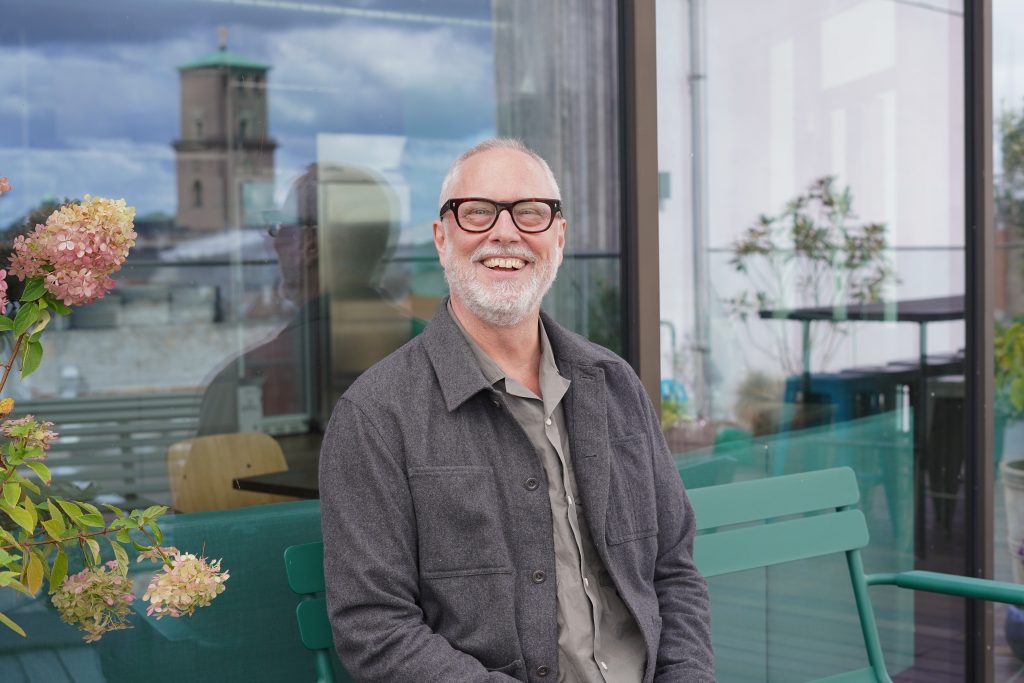
Moving for love
Phillip’s is one of those stories – he ended up moving to Denmark for love! He met his wife through some mutual friends back when they were both living in New York. She was working on her master’s degree in fashion design, and he was working as a Micromedia Director developer.
The first summer after they got together, he surprise-visited her in Copenhagen for an entire month. He had an amazing time and completely fell in love with the city. They rode around on bikes, explored food places and enjoyed great concerts. They even toured outside of the city, they visited Louisiana, the famous modern art museum, and the island of Bornholm.
Some years later, after a lot of travelling back and forth, they got married and were expecting their first baby. As they were not happy with the healthcare system in the US, they decided to move to Denmark to welcome their daughter and spend the first year of her life here.
After 2 years, they both got great work opportunities in the US and so they decided to move back. Though their reality looked very different there – they worked very long days and they needed an au pair to help them take care of their daughter. They were almost trapped in a vicious loop, needing to work to be able to live, and not being able to live their life because they had to work so much.
And then, 9/11 happened… With all the events that followed, Phillip and his wife decided to move back to Denmark temporarily, until things got back to normal. In New York, it was relatively easy to find an apartment once you had a job. In Copenhagen though, it was quite the opposite. You needed to find an apartment to make the move a possibility and they were able to find a place through a friend. Philip also quickly got a job as a Flash Developer, as they were in high demand back in the early 00s.
Quality of everything turned temporary into permanent
Time passed and slowly the thought of going back to New York started fading away. Phillip and his family were really enjoying their life in Copenhagen and what ultimately made them stay for good was the general quality of life they had here. Managing to work and also raise a child, spend time with them, go pick them up from school and dedicate time to other activities – this was not something they were taking for granted.
Phillip also really appreciates the flexibility around working hours here. For himself, he prefers to start his days early, so that he can be out of the office by 3pm and have the afternoon off for other activities. “I love music and I enjoy going to concerts in the evenings”, he says.

Besides this, Philip notes that you do not need the same kind of resources they needed back in the US to have a high quality of life. Housing is not as expensive and there are not so many extra expenses to take care of (like paying for private health insurance or having an au pair). Safety is built into the society, you don’t have to fear the push back from the institutions around you, because everything is set up to give you the flexibility you want and need.
From Flash to Playables
Phillip’s early days have been a ‘blur of different jobs’, as he puts it. He jumped onto the Flash train during the early days of the internet, which he did for many years. On the other hand, he always enjoyed working with interactivity and wanted to dive into the world of Unity.
And so, after some years in Copenhagen, when Flash really started going downhill, he got a job on a kid’s learning app, which was his first real taste of gaming. Then, in 2017, Tactile reached out to him. They needed someone to switch one of our biggest games at the time, Bee Brilliant, into a Facebook game. This was the first time in his life that he did an on-site test assignment for a job! Luckily for both sides, he passed and officially joined the team.
His journey with Tactile started in one of our first offices. It was a small space, but the project was really exciting and there was a lot of code in the game. After that, he joined the Marketing department and the rest… is history 🙂
Today, nearly 8 years later, he is mainly focusing on programming playables, which has finally brought together his programming skills and love for interactivity. “The cool thing with marketing is that we can do a lot of experimentation and research, and I’m always finding new ways to do things,” Phillip explains. In his day-to-day, he works in close collaboration with other teams who are doing very different things, for example developing a match-3 gameboard for our newest games.
Words of advice
‘Hop out into stuff!’ he says. For example, sports groups are a really great way to do something active and meet people.
Whilst Phillip himself was lucky to have been pulled into Danish groups through his wife, then he truly believes that it’s important to find Danish friends. They will bring you into their friendship groups, you will get to observe and learn things that are really hard to just read and learn about. And also, it’s a great opportunity to use the language.
✨
Khrystyna Pshenetska, Recruiter
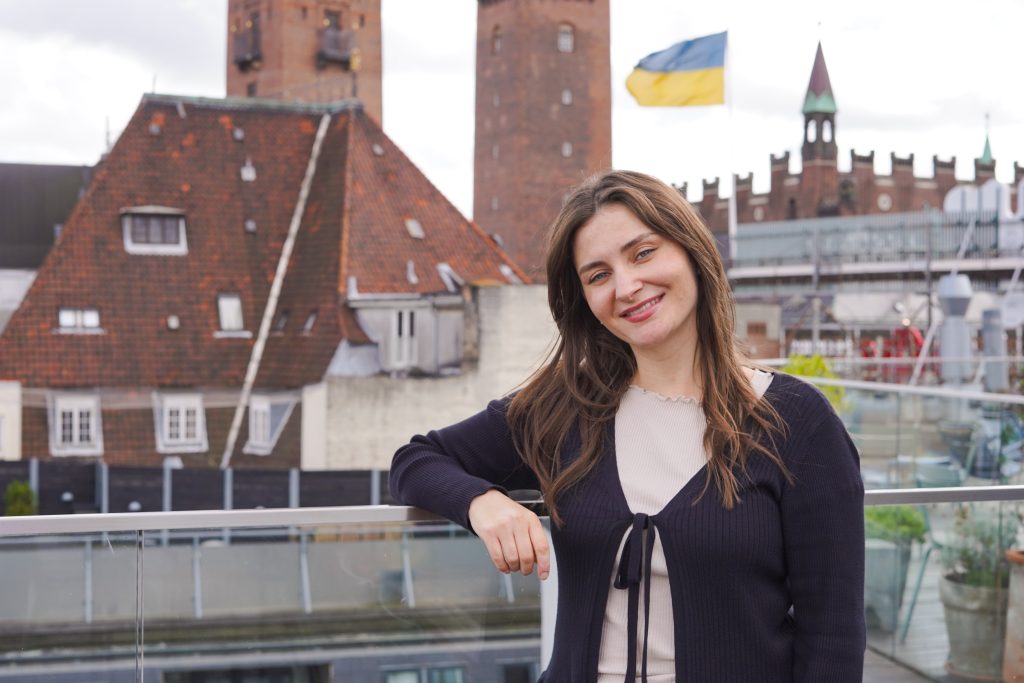
Summer vibes in the city
For Khrystyna, the thought of moving to Copenhagen was born when she first visited the city in 2018. She immediately fell in love with its vibe, architecture and people. She will never forget seeing Danes swimming in the city’s canals that summer.
After coming back to Ukraine, the idea of moving stayed just that for a couple of years… until the war broke out. The worsened situation in Kyiv gave her the kick she needed to start looking for jobs abroad. Copenhagen was right on top of the list, and after getting the job offer at Tactile, everything fell into place, and she decided to make the big move.

Equality is real and systems care for everyone
Khrystyna remembers that the first few months after relocating were not easy, though things did slowly start falling into place after she got her own apartment and built a community of friends. This definitely helped her to feel more settled in. She can’t remember the exact moment it shifted, but at some point she really started enjoying her life in Denmark.
The thing that really made her want to stay in Copenhagen more long term was the general quality of life she experienced here. Systems are well organized, there is much more equality and people can easily get access to the basic things they need to feel well (such as education, health care and a good living situation). “Yes, the taxes are high, but it is clear that this actually goes towards improving everyone’s quality of life,” she adds. “I see less inequality and unfairness in society here, and the systems are set-up in a way that benefits everyone.”
The official Tactile photographer
Khrystyna’s journey with Tactile started in 2022 when she joined our Talent & Culture team as the newest Recruiter. The gaming industry was already familiar to her from her time at Playrix, and she quickly picked up on things.
Over time, she started taking on more branding tasks on top of her recruitment work and at some point, she was reminded of her passion for taking pictures. To strengthen her skills, she took a small photography course as a part of her development journey here at Tactile. What started as a small project, grew into her becoming the official Tactile photographer! She’s the one snapping all the pictures of our Tactilers which we use for SoMe, and she’s also become the main photographer at our various events – which she loves to attend herself.
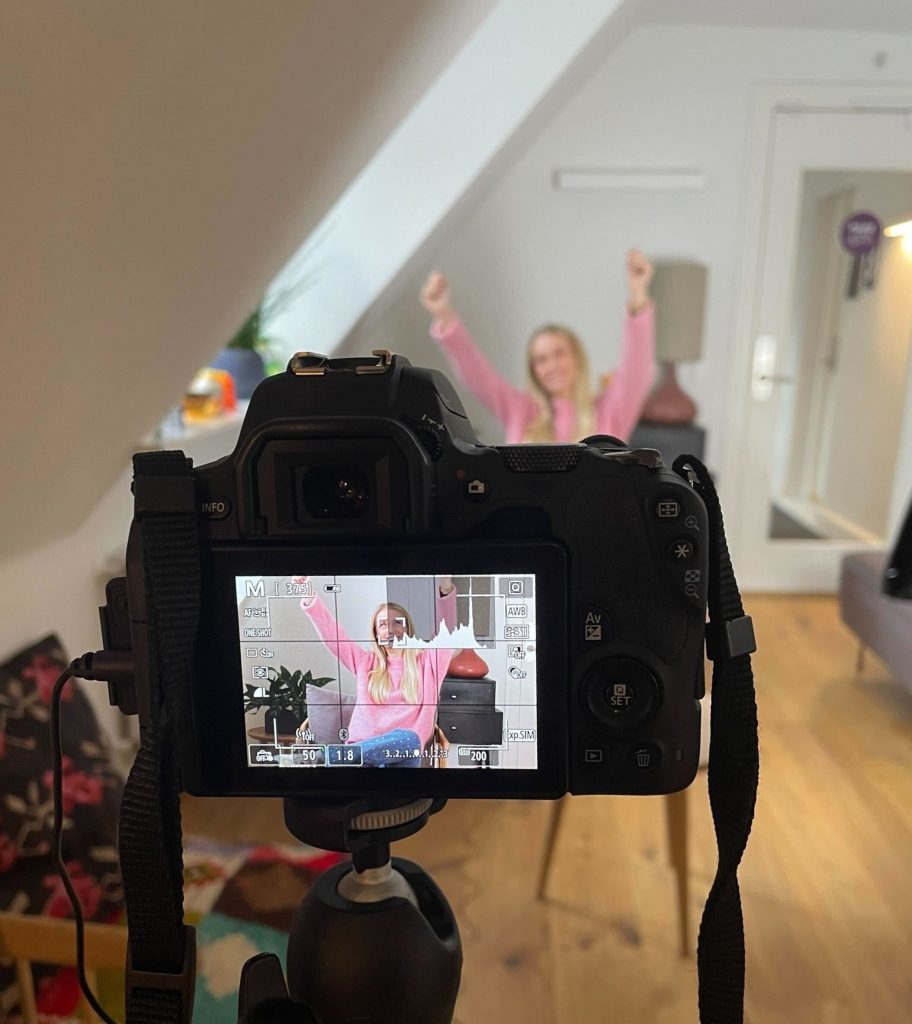
As she approaches her 4th anniversary at Tactile, she has by now pretty much worked with every team in the business and she understands our niches well. This has helped her feel very integrated into the company and in turn, she’s become an important part of building future generations of Tactilers.
Embracing the spirit of hygge
After spending over 3 years in Copenhagen, the most Danish habit she has picked up is planning ahead more! She now uses her calendar not only for work, but also to stay on top of her private life. Besides this, she has gotten into the habit of celebrating Christmas for several weeks, which helps her a lot when the December darkness hits.
On top of this, she’s trying to incorporate more ‘hygge’ habits into her life. For Khrystyna it became important to acknowledge and accept that winter in Denmark is long and dark, and that she needs to actively make plans to get through the winter months – celebrations, gatherings, networking events and of course, plenty of relaxing things. And it’s not just about the big things. She loves to make little plans around things that bring her joy, so that she can keep herself distracted from the winter blues.

Words of advice
Besides ‘keeping it hygge’ her best advice for getting more integrated into Danish life and society is to use one of the many online apps available for meeting new people. For her, it was Bumble Friends. She met two of her closest friends in this way and she thinks it’s a great solution for more introverted people, who don’t do so well in big social gatherings and prefer smaller, more intimate settings. Khrystyna adds: “Building a strong community around you is important, big or small. Life gets much easier after that.”
✨
Alberto Dal Corso, Product Manager (LiveOps)

An educational experience abroad
10 years ago to date, Alberto enrolled into a master’s degree at the University of Southern Denmark in Odense. His initial idea was to just do an Erasmus student exchange, but in the end he decided to take his entire master’s degree here.
There were many reasons for why he chose Denmark as his study destination – they had a lot of interesting programmes to pick from, education is free and you get financial support from the government (called SU). For Alberto, Denmark was also close to home, as he originally comes from Italy. And, perhaps most importantly, his brother had been living in Copenhagen for some years at that point, so he had family close by.
Alberto enrolled into a Brand Management and Marketing Communications master’s degree. Even though he was based in Odense, he often visited his brother in Copenhagen. During the 2 years of his studies, he also had the opportunity to do a short student exchange in the US, so his dreams of doing an Erasmus came true in a different way.
From SoMe to Product Management
He never had a solid plan for what will be the next step after graduation. He just wanted to get there and then see what happens. After 2 years in Denmark, he had built a network of friends, he was a member of several sports communities (rugby – shoutout to the DTU Rugby Exiles 📢 – and golf), started a band with a group of mates, and also a part of his family was here. In the end, it just made more sense for him to stay.

And so 2 months after graduating, he interviewed with Tactile and got the job as a SoMe intern. Today, nearly 8 years later, he’s had the opportunity to change a lot of roles within Tactile and try different things, until he found what he liked and could be best at. “It was great to have had such growth opportunities,” he says.
Today, he’s working in a role that blends both his creative side and his interest in product. Over the years he has specialized more and more on LiveOps (live game operations), where he’s responsible for all in-game events which we offer across the entire portfolio of our games. It has also been an exciting journey to see the team growing around him over the years.
In general, meritocracy is something he really appreciates in Danish workplaces – as an employee, you get recognized a lot for doing good things and you get rewarded if you work well.
The advantages of living in a small capital
When Alberto first visited his brother in Copenhagen, before he decided to move here, he liked the city a lot. “It’s perfectly sized for a capital,” he explains, “You have the advantages of being in a capital where a lot of things and events are happening, but it’s not very big at all, so you can easily find places with only a few people, and enjoy a more small city atmosphere.”

Alberto also mentions the short commute time wherever you might be going and a public transportation system that works super smoothly. “In Italy, you need a car to get anywhere, and here we just use bikes and the metro” he adds.
Settling in as a student vs. someone’s plus 1
For Alberto, the process of getting settled in went very smoothly. As a student, he lived in a big collegium with a big community of students around him. When he then moved into ‘the real world’, he lived in a shared apartment, which again helped him to meet a lot of people, quickly. So he pretty much felt at home immediately.
Contrary to that, when his (now) wife joined him in Copenhagen back in 2021, she had quite a different experience. She didn’t have the university environment around her and the luxury of easily meeting new people. And so she often visited Tactile’s Friday bars with Alberto. “At Tactile, there’s a lot of people in the same situation,” he says, “expats that have moved to Denmark alone, with a variety of different interests, looking to meet new people and build a community around them.”

What’s next?
In the 10 years of living in Denmark, Alberto has picked up a few ‘Danish’ habits. Most notably, he changed his eating times and started eating a lot earlier than he ever did back in Italy. It is now completely normal for him to eat lunch at 11.30 and dinner at 18.00. Besides that, he also started biking everywhere, and rarely uses a car.
He is also currently in the process of applying for his Danish citizenship! He has already passed all the exams, including the Danish language exam, and is waiting for the official decision. Tillykke, Alberto 🥳
Time for Talent – With Mads Brandt
Hi, my name is Mads, it’s nice to meet you! 👋

I joined Tactile in May 2025 as a Frontend Engineer on the Core team.
The Core team plays a big supporting role across Tactile. We build and maintain the internal tools that keep everything running smoothly – from dashboards for the Data and Marketing teams to build systems and LiveOps tools. Our work connects so many parts of the company, and I love that what we build behind the scenes has such a wide impact across Tactile.
I also work closely with the other frontend engineers and product designers on cross-team projects like our internal design system, where we focus on creating a cohesive and consistent user experience across all our internal tools.
🚀 Before Tactile
It wasn’t exactly a straight line to becoming a developer for me. I’ve always been good with computers, but I actually started out studying marketing – which luckily turned out not to be for me, so I dropped out. After a few years of working in a supermarket, I decided to follow my curiosity for tech and applied for Computer Science.
That’s where I really found my passion for software development. Most of our classes were in Java, but I was always more drawn towards JavaScript and React, crafting frontends that not just functioned, but felt great to use. During an assignment on one of the first semesters we had to build frontends using static Java Server Pages (JSP). I couldn’t help experimenting a bit, so I figured out how to inject jQuery into them to make the pages dynamic.
While studying, I joined an InsurTech consulting company as a student developer and later continued there full-time as a backend Java consultant with a little bit of frontend. Over the next three years, I transitioned from the backend to solely frontend development, eventually becoming the Frontend Lead.
By early 2025, I was ready for something different – something bigger, more creative, and with more focus on how we build things and doing it the right way. I wanted to work with more frontend engineers to learn from and spar with, and a culture where taking the time to do things properly isn’t seen as a luxury but as part of the job. That’s when I found Tactile.

💜 Joining Tactile
When I joined Tactile, it was quite a change. I went from a company of around 40 people to one with more than 350 – over 200 in Copenhagen alone, and representing more than 50 nationalities. It’s almost rare to be a Dane here, and even rarer to be born and raised in Copenhagen like me. I love that, though – it gives the office such an international, inspiring energy with talents from all over the world.
Tactile doesn’t just hire for skills – we hire for culture fit, and we really mean it. We even have a culture book. From day one, everyone – not just my own team, but people on my floor and even across the whole building – has been incredibly welcoming. It really rubs off on you and creates an atmosphere where you actually want to collaborate, ask questions, and help each other improve.
The learning curve has been (and still is!) a bit steep when diving into data science related topics like dimensions, measures, aggregators, granularities, and data marts – but it’s incredibly rewarding to see how our frontend tools can help make that complexity more approachable.
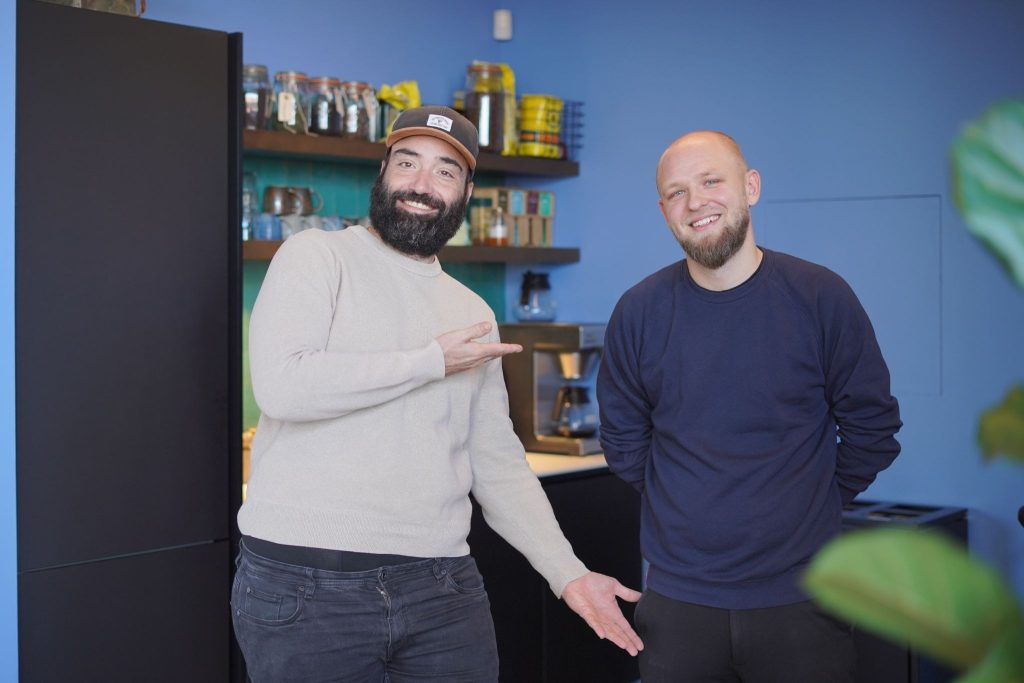
💪 Having an impact
Within Core, we have different sub-teams. I am on the Data and Marketing team focusing on tools for these two teams.
My main gig is a major redesign of our Data Dashboard – the tool which our analysts use to reveal insights into player behavior across our games, and make data driven decisions. The original dashboard was developed years ago, mainly by backend engineers, and most frontend work since then has focused on the LiveOps Dashboard – so the Data Dashboard was definitely ready for some love
Before I joined, our product designers had created a completely new design that makes the process easier to follow and aligns with the LiveOps dashboard — and my job has been to bring that design to life.
Even though I work closely with the other frontend engineers on shared systems, code reviews etc. the Data Dashboard has become my project in a way. I really enjoy that sense of ownership, especially when I see how it can help others. Tactile is an extremely data-driven company, so it’s rewarding to know that the tools I build play a part in the insights that shape our games. But honestly? The best part is working with people who care as much about doing things well as getting them done.
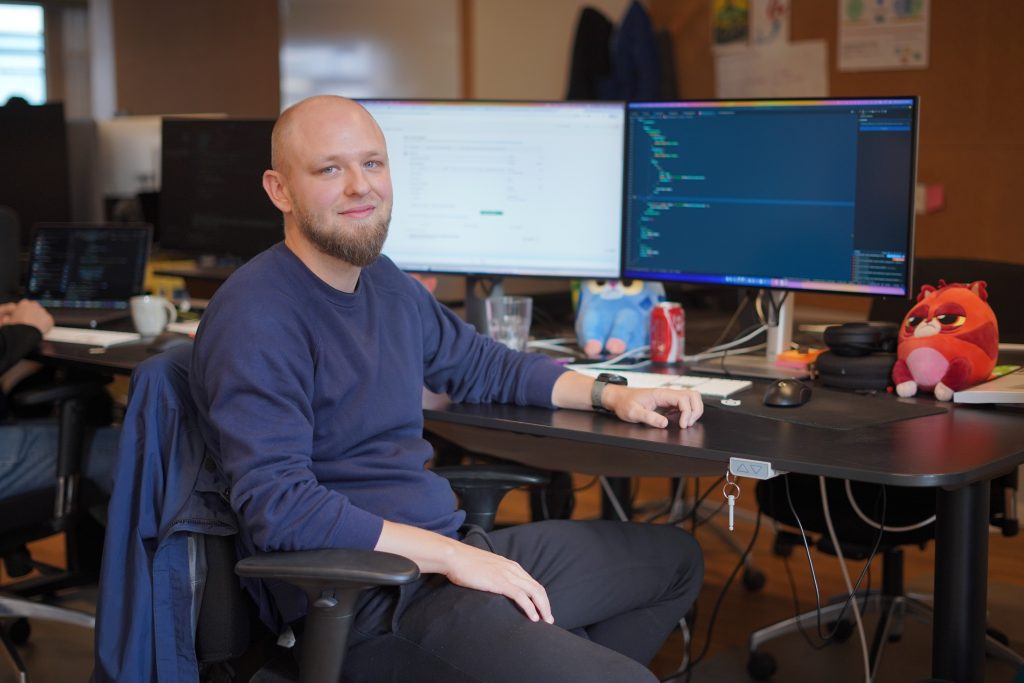
📚 The keys to success
Hmm, stay curious and keep building things, even small projects. The best way to learn is by experimenting, breaking stuff (yes, we all make bugs!), and figuring out why it broke.
Don’t get too hung up on using the “perfect” tech stack or chasing every new trend. No codebase is perfect. There’s always legacy code, trade-offs, and things you’d love to refactor. At Tactile, we focus on improving things gradually; upgrading, cleaning up, and maintaining while still moving forward. You simply cannot be on the cutting edge all the time, especially in frontend, where sometimes it seems that what’s “in” last week might be deprecated today. What matters is writing solid, maintainable, clean code and keeping a steady pace of improvement.
Lastly, don’t underestimate the importance of communication. Writing good code is one thing, but explaining your ideas clearly, arguing for your choices, and collaborating with others is just as valuable – at Tactile, this matters just as much as your technical skills. The people who grow fastest are often those who ask questions and aren’t afraid to admit when they don’t know something. Find a place where that’s celebrated – it makes all the difference.
It’s Time for Talent – with Anna Diekelmann
Hi, my name is Anna, it’s nice to e-meet you! 👋
I joined Tactile in the spring of 2023 as a People Partner. My role here has two major focuses: I support our team leads, acting as a coach and partner on all people-related matters, and then I also spend a great deal of time designing new initiatives and processes that shape how we onboard, develop, and support our people.

🚀 Before Tactile
I’ve always wavered between pursuing a career in marketing or HR – both wanting to work creatively while also being driven by a wish to make workplaces a more meaningful place (after all, we do spend ⅓ of our lives here).
When I joined Tactile, I was brand new to the gaming industry. Coming from a similar role in an e-commerce company in the knitting industry 🧶I had a LOT to learn about games (to be honest, I still do).
But whether it’s within knitting or games, I’ve found that I really thrive in creative companies with a lot of freedom and little hierarchy – where things never stay the same for long, and where we have room to be playful and a little nerdy with what we do.
And in that sense, I think I found the perfect sweet spot between marketing and HR 🤝
💜 Joining Tactile
I joined Tactile right after the big growth phase following the success of Lily’s Garden. At that point, a lot of people had joined, and our team had the big task of helping Tactile transition from being very start-up-like into a more established company. That meant putting more structure in place around onboarding, development talks and leadership development. At the same time, it was really important to us not to lose the special ingredients in our culture: the flat and organic structure and the freedom to take ownership.
A lot has happened in the last 2 years. It’s been great to follow how our team leads have grown as leaders, see how projects like Tactile Bootcamp have helped build a bridge between the old and the new culture, and how we continue to learn and evolve as an organisation.
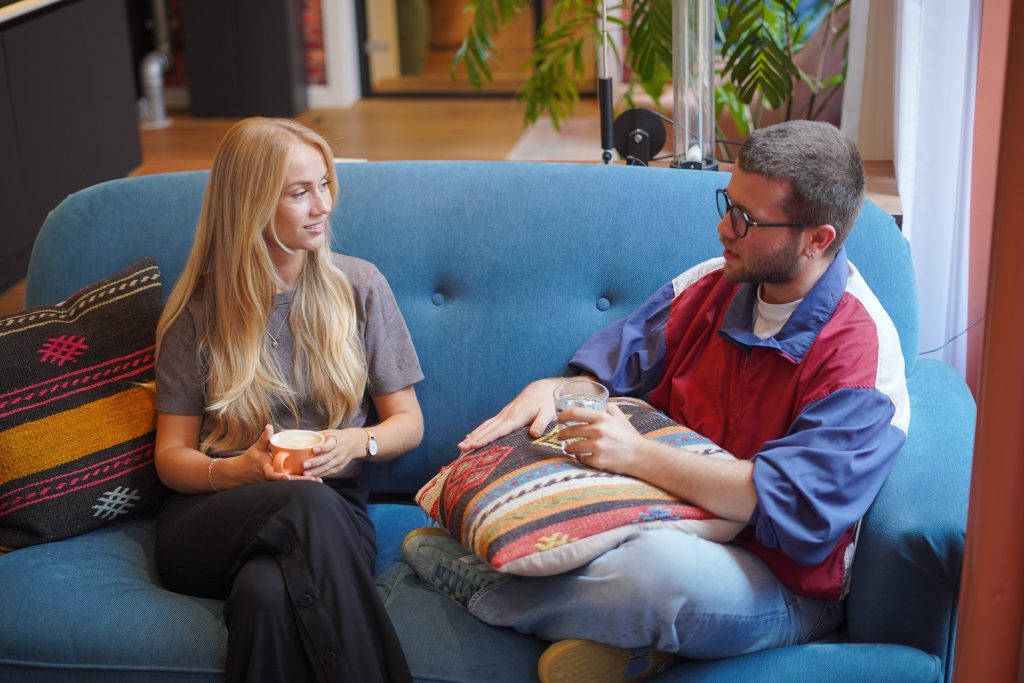
💪 Having an impact
I’m really grateful for the amount of trust and freedom our team has to decide how we work. There is a lot of room for new initiatives, and there is often a short timeline from when we come up with a new idea to when we start executing, which just makes work more fun and dynamic.
With agile and lean being at the core of our culture, it also allows us to never get stuck in old ways. We always ask ourselves, “Does this actually provide value?”, so we don’t end up adding processes just for the sake of processes. When we do develop new processes, we have a “no size fits all” approach, meaning we tailor everything to the individual teams. It forces us to stay flexible and constantly iterate and optimize how we do things, and I find that so rewarding.
Looking back, I’m really proud of all the things we have built that have made an actual impact for our teams – I feel that is kind of rare in an HR position.
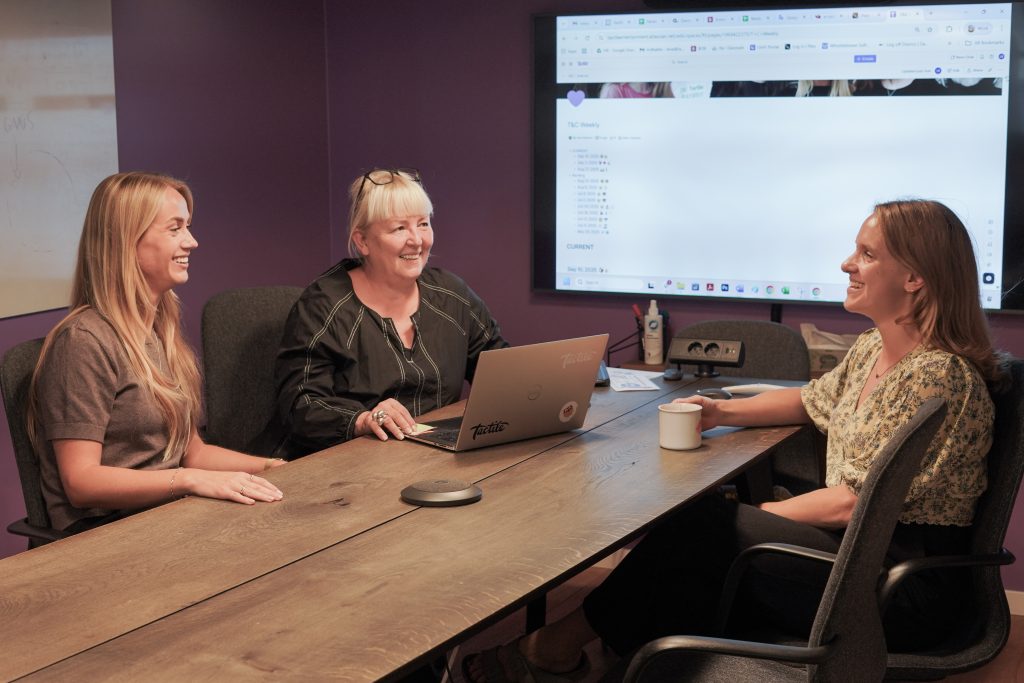
📚 The keys to success
With fear of it sounding too buzzword-y, I want to say adopt a growth mindset. This industry is moving fast and things change all the time, which is fun and refreshing but it can also feel overwhelming at times. Be ready to adapt and lean into the chaos. And don’t be afraid to ask a lot of questions – it’s the best way to learn.
